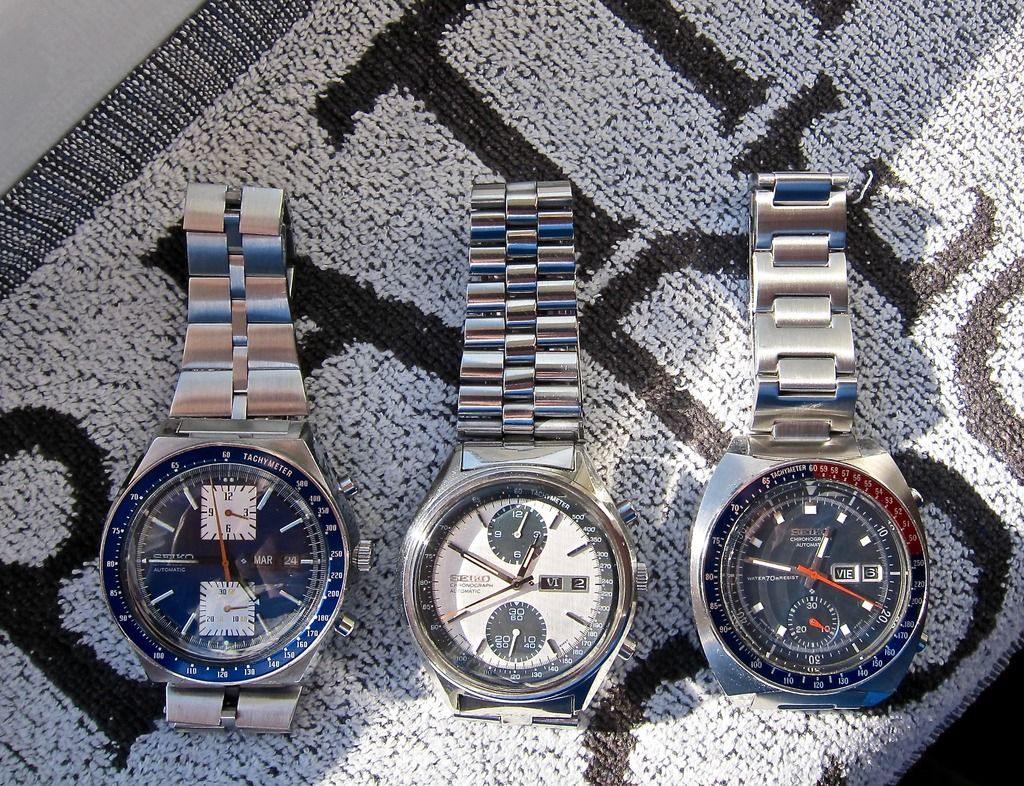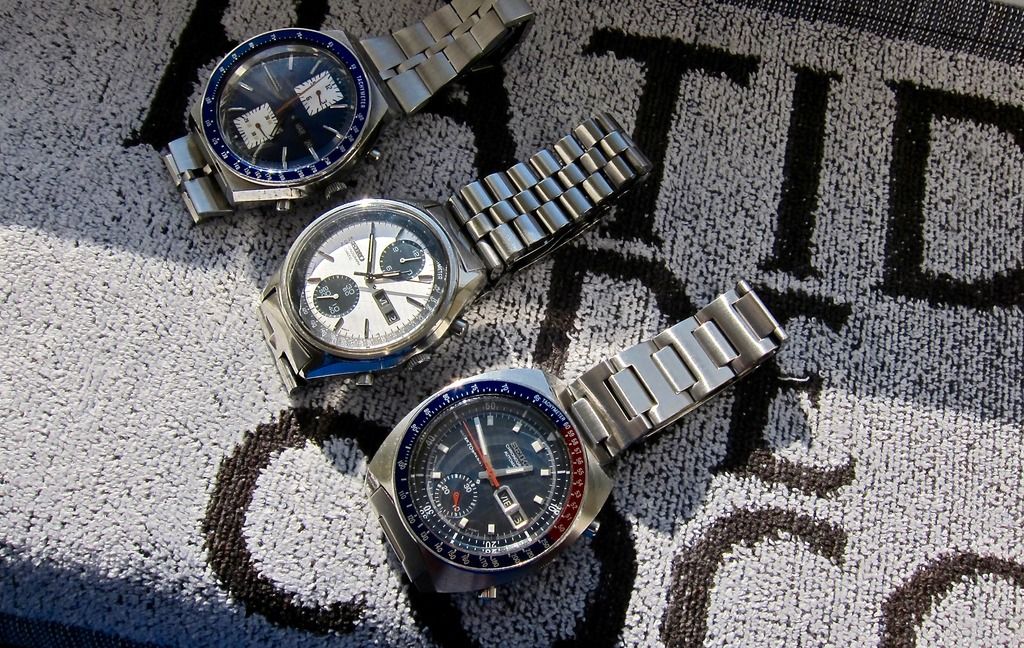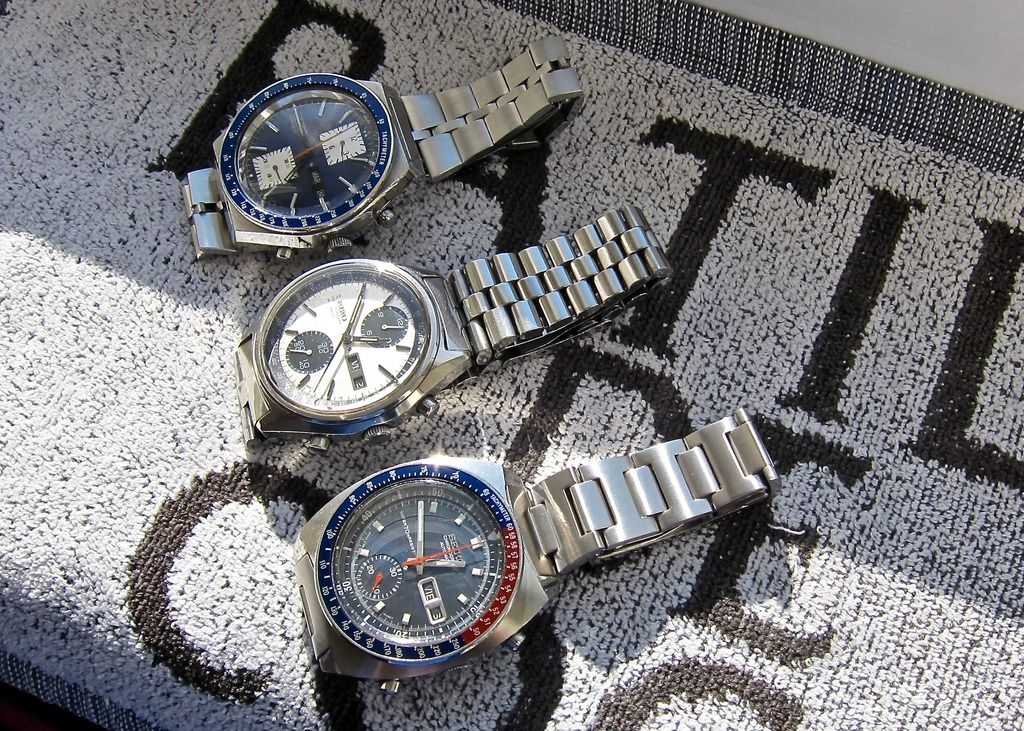Re: Vintage Seiko chronographs
Δημοσιεύτηκε: Τρί Οκτ 11, 2011 10:26 pm
Just Because: Seiko 6139, The Other First Automatic Chronograph

It's been discussed here and elsewhere many times, the controversy surrounding the title of 'first automatic chronograph' can be polarizing, but often comes down to a matter of opinion. While two of the movements involved are most often profiled, the third is relatively unknown to most enthusiasts. The El Primero and the Caliber 11 enjoy a healthy fan base to this day, and deservedly so. But there was a third contender back in 1969, from the other side of the world, it was Seiko's 6139.
While Zenith may have announced their achievement first (Jan '69), the group behind the Heuer Caliber 11 seems to have made it to the global market the earliest (Aug '69). In the background of all this noise was Seiko, quietly producing their automatic chronograph, and releasing it to the Japanese market as early as May '69. For a more comprehensive breakdown of the race to bring the first automatic chronograph to market, see Jeff Stein's Project 99.
So what set Seiko's 6139 apart from the well covered El Primero and Caliber 11? It was called a "speed timer" by its fans, due to its sole 30-minute register at 6 o'clock. The watches had a fixed tacky bezel around the dial, and an inner rotating bezel ring. The crown sits flush inside the case, leaving only the chronograph actuators protruding at the edges. The movement also featured a day-date complication, which could be quickly set by pressing the crown into the case. The column wheel chronograph engages smoothly but firmly, better than many of today's entry level chronograph options.
The reason you probably don't hear much of the 6139, other than the fact that it was produced by Seiko, is that it went out of production around 1980. Another reason, there were many case and dial variations, obscuring the establishment of any identity. That said, the 6139 is a robust movement, and great examples in good working condition can be found with relatively little effort these days. In fact, here's a nice example right here.
http://www.hodinkee.com/blog/2011/10/11 ... ograp.html

It's been discussed here and elsewhere many times, the controversy surrounding the title of 'first automatic chronograph' can be polarizing, but often comes down to a matter of opinion. While two of the movements involved are most often profiled, the third is relatively unknown to most enthusiasts. The El Primero and the Caliber 11 enjoy a healthy fan base to this day, and deservedly so. But there was a third contender back in 1969, from the other side of the world, it was Seiko's 6139.
While Zenith may have announced their achievement first (Jan '69), the group behind the Heuer Caliber 11 seems to have made it to the global market the earliest (Aug '69). In the background of all this noise was Seiko, quietly producing their automatic chronograph, and releasing it to the Japanese market as early as May '69. For a more comprehensive breakdown of the race to bring the first automatic chronograph to market, see Jeff Stein's Project 99.
So what set Seiko's 6139 apart from the well covered El Primero and Caliber 11? It was called a "speed timer" by its fans, due to its sole 30-minute register at 6 o'clock. The watches had a fixed tacky bezel around the dial, and an inner rotating bezel ring. The crown sits flush inside the case, leaving only the chronograph actuators protruding at the edges. The movement also featured a day-date complication, which could be quickly set by pressing the crown into the case. The column wheel chronograph engages smoothly but firmly, better than many of today's entry level chronograph options.
The reason you probably don't hear much of the 6139, other than the fact that it was produced by Seiko, is that it went out of production around 1980. Another reason, there were many case and dial variations, obscuring the establishment of any identity. That said, the 6139 is a robust movement, and great examples in good working condition can be found with relatively little effort these days. In fact, here's a nice example right here.
http://www.hodinkee.com/blog/2011/10/11 ... ograp.html



